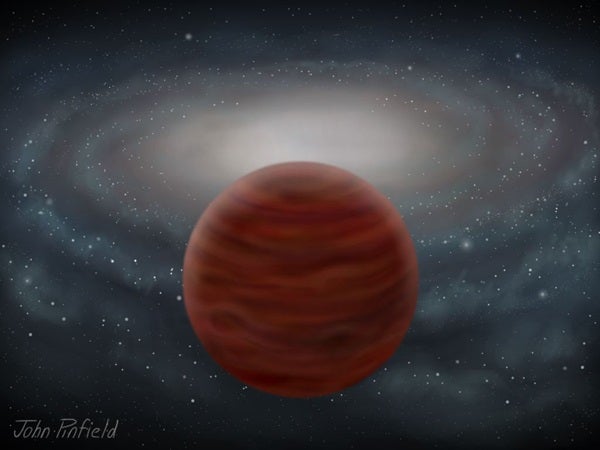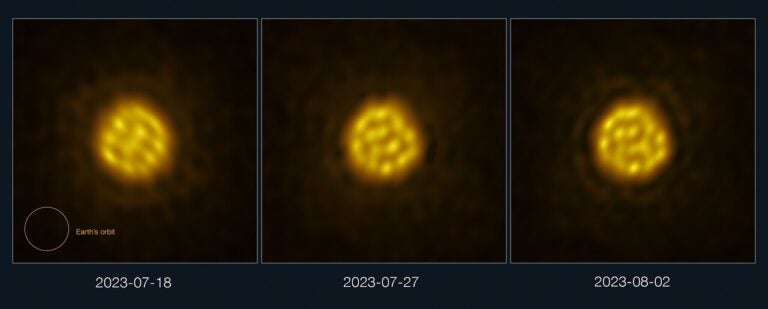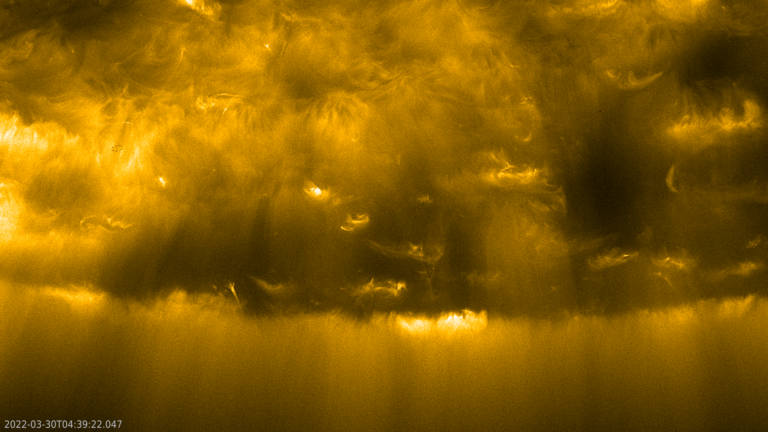Brown dwarfs are starlike objects but are much less massive — with less than 7 percent of the Sun’s mass — and they do not generate internal heat through nuclear fusion like stars. Because of this, brown dwarfs simply cool and fade with time, and very old brown dwarfs become very cool indeed — the new discoveries have temperatures of 480°–1100° Fahrenheit (250°–600° Celsius), much cooler than stars. In comparison, the Sun has a surface temperature of 10100° F (5600° C).
Pinfield’s team identified the new objects in the survey made by the Wide-field Infrared Survey Explorer (WISE), a NASA observatory that scanned the mid-infrared sky from orbit in 2010 and 2011. The object names are WISE 0013+0634 and WISE 0833+0052, and they lie in the Pisces and Hydra constellations, respectively. Additional measurements confirming the nature of the objects came from large ground-based telescopes (Magellan, Gemini, VISTA, and UKIRT). The infrared sky is full of faint red sources, including reddened stars, faint background galaxies (large distances from our Milky Way), and nebulous gas and dust. Identifying cool brown dwarfs among this messy mixture is like finding a needle in a haystack. But Pinfield’s team developed a new method that takes advantage of the way in which WISE scans the sky multiple times. This allowed them to identify cool brown dwarfs that were fainter than other searches had revealed.
The team of scientists then studied the infrared light emitted from these objects, which is unusual compared to typical slower moving brown dwarfs. The spectral signatures of their light reflects their ancient atmospheres, which are almost entirely made up of hydrogen rather than having the more abundant heavier elements seen in younger stars. “Unlike in other walks of life, the galaxy’s oldest members move much faster than its younger population,” said Pinfield.
Stars near to the Sun — in the so-called local volume — are made up of three overlapping populations — the thin disk, the thick disk, and the halo. The thick disk is much older than the thin disk, and its stars move up and down at a higher velocity. Both these disk components sit within the halo that contains the remnants of the first stars that formed in the galaxy.
Thin disk objects dominate the local volume, with thick disk and halo objects being much rarer. About 97 percent of local stars are thin disk members, while just 3 percent are from the thick disk or halo. Brown dwarfs’ population numbers probably follow those of stars, which explains why these fast-moving thick-disk/halo objects are only now being discovered.
There are thought to be as many as 70 billion brown dwarfs in the galaxy’s thin disk, and the thick disk and halo occupy much larger galactic volumes. So even a small (3 percent) local population signifies a huge number of ancient brown dwarfs in the galaxy. “These two brown dwarfs may be the tip of an iceberg and are an intriguing piece of astronomical archaeology,” said Pinfield. “We have only been able to find these objects by searching for the faintest and coolest things possible with WISE. And by finding more of them, we will gain insight into the earliest epoch of the history of the galaxy.”





![Albireo (Beta [β] Cygni) is a classic example of a double star with contrasting colors.](https://www.astronomy.com/uploads/2024/08/Albireo.jpg)




